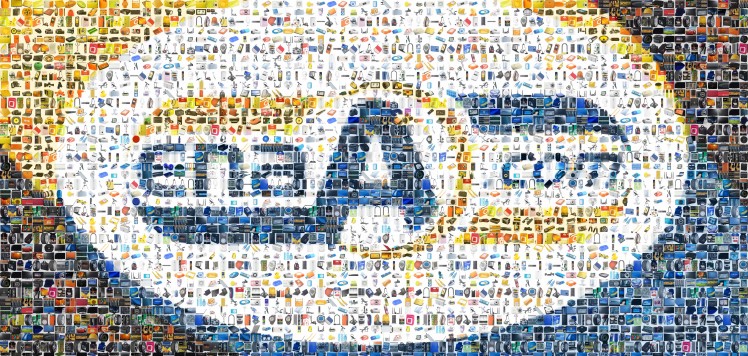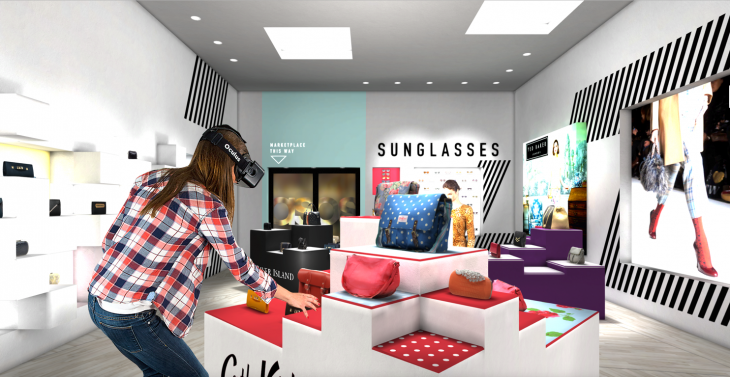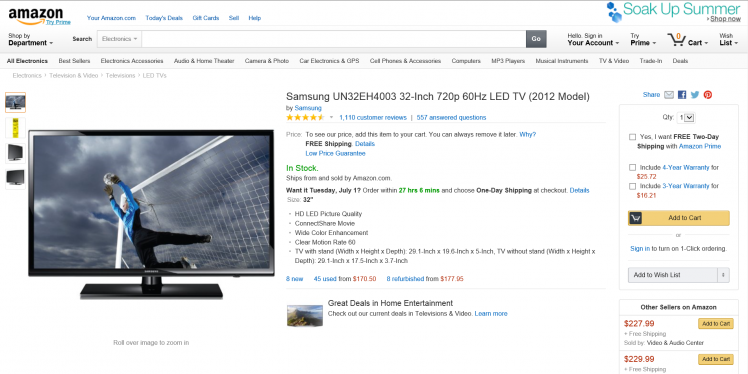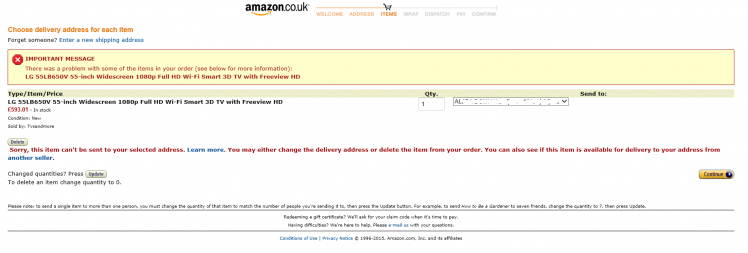Online shoppers notice every detail. Detail?
How did Amazon screw up? Or how fast can you lose a customer? Article How Amazon Messed Up is the best summary ever, just to illustrate that everything you do should be for the customer. I couldn’t say it better and I’ve been selling online for 18 years. This is why you should sell on enaA.com, Slovenia’s largest marketplace. Because we take all this into account. Our partners just have to prepare the best offers. The enaA team takes care of the rest. I’m really proud of them!
Why there is no European Amazon, Google, Uber & Airbnb
When I started my online sales business with the enaA.com website in 1999, there was practically no legislation regulating this field. A grey area. Should I have waited for laws to be adopted in order to know how to work legally?
Seventeen years later and we are still far from having relevant laws in Slovenia which would support the development of online trading. All this in the country which has in the meantime succeeded in legalising same-sex marriages, the 21st country in the world to do so. I am proud of it. Really proud! I have also lived to see cannabis no longer being classified in the illicit drug class that attracts the most severe penalty and is now allowed to be grown and used for medicinal purposes. Slovenia is not exactly among the leading countries here but at least things have moved forward. We put the right to clean drinking water into the constitution.
And although European politicians refer to the development of the digital market as one of the most important generators of European economic growth, we online traders have so far received from them only legislation on web cookies, which has neither increased the volume of online sales in Europe nor improved user experience. Thus one cannot count on European companies to develop and compete with the American Amazon or the Chinese Alibaba. Sales of both companies to customers in EU countries have been growing steeply from year to year. Why? Because the countries of their origin have highly effective solutions regarding copyrights, customer protection, payment transactions and delivery, which allow for exceptionally low cost of selling throughout the world. Let us not forget that we are dealing here with a global retail sale with an average purchase price of about 20 euros in which every cent counts! Billions of contracts with the average value of peanuts. In Slovenia, the profit would already have evaporated during the administrative procedures related to re-export, VAT accounting, arrangement of copyrights and the costs associated with packaging waste and the destruction of electricity devices.
There may actually be only a handful of Slovenian photographers who sell their work on istock.com, yet every day there are more and more businessmen who know how to buy products in China and send them directly to Amazon warehouses in the USA to be re-sold from there. If we add to these Alibaba, eBay, Etsy and other similar online wholesale markets, this is not such a small business any more. But these marketplaces are not located in Europe and so the money goes other way.
Do we have legislation to regulate this? No. Are people who are doing this breaking laws? Not intentionally, for sure. Uber and AirBnB also want to operate their businesses legally. The fact that they are coming on to the market with a new business model should not be an obstacle. Both offer a very transparent operation, much more than, for example, issuing invoices in regular taxis or in renting rooms and suites via tourist associations on the Adriatic coast. Everything is electronic, everything is recorded. It is quite clear what the VAT value is, how much the operator gets and how much goes to the platform administrator. And then the state comes along to say that the business model is not entirely compatible with existing laws and regulations. Understandable. Of course. This is a new thing. We know. Don’t try to make me feel bad for driving with Uber. The sharing economy is an inevitable part of our present and the future. Write a new law. This is your business. The world is evolving! New business models are a constant. Write the best possible law so it will be talked and written about all over the world. Then the EU will become the e-centre of the world.
First published in Finance Manager (version for Slovene readers) http://manager.finance.si/8852131/Aljo%C5%A1a-Domijan-Zakaj-v-Evropi-ne-moremo-narediti-Alibabe-in-Amazona
How to sell to the rich
Times Square in New York must be the most advertisement filled place that I have ever visited. To be fair, though, there might be squares in Beijing, Tokyo or Shanghai that feature even more ads. I took it upon myself to see every single advert, but I failed. The combinations change so quickly that the brain fails to keep track. Of course, one might be tempted to question the logic of showing advertisements 30 meters above people’s heads. I for one, took the time to look up, but what about most people? The guy waiting for a girl? In this place, an advertisement will set you back anywhere from 1.1 to 4 million dollars per year. The owners of One or Two Times Square at the junction of Broadway and Seventh Avenue annually generate 23 million dollars, boasting about having the most expensive billboard in the world. On the other hand, considering that Americans pay 3.8 million dollars for a 30 second advertisement during the Super Bowl, that’s actually quite a bargain.
The image of Times Square flashed before my eyes as I was walking down an affluent London neighbourhood. Not one single advertisement was to be seen. It was an advertising wasteland. So, rich people do not want to see billboards where they live. I am intrigued now. Apparently, there are no advertisements because there is no interest among the advertisers. Does that mean that rich people don’t buy the things that are usually featured on billboards? A great car for 48 x €199.00? That’s a good one. A Bugatti Veyron for 24 x €59,999.00? That one is even better.

How to get to rich customers? They don’t watch TV or listen to the radio. Although, some still read the newspapers (!), most can be found online. Obviously, you can’t get to them via Facebook. Likewise, Twitter and LinkedIn aren’t the way to go.
If you spend most of your time travelling, the IslandX network might be right for you. www.islandx.com is a new network that was launched this year. At first glance, it doesn’t appear to be targeted only at the rich. But to be fair, you really can’t travel much if you don’t have the means! The website states that today there are 214 million expatriates, and they are always on the move. IslandX members are provided with information on world destinations, jobs around the world, opinion exchange and experiences. They can also receive help from other network members. You are expected to enjoy writing and to articulately boast where you were, how you spent your time there, whom you met, what you bought and how much you spent. Wrap this up in a distinctive writing style and you are sure to attract people’s attention – perhaps even that of someone rich!
Since 2004, the number of members of the elite social network A Small World is on the rise. However, 850 thousand members sounds a bit much to imply something elite. Recently, A Small World added the feature to purchase luxury items and services. However, high-end products are not available to everyone, but only to those who can really afford them. The number of users is therefore said to drop to 250 thousand, and the remaining 600 thousand members will have to say farewell to the exchange of opinions, advice and experience with the wealthier members. How to sign up? Beside the financial aspect, administrators expect you to enter a few phone numbers of the rich and famous from around the world. Easy peasy, right?
If you are even wealthier, you can join the Affluence network free of charge. All you have to do is prove that you have at least one million dollars and an annual income of over 200 thousand dollars. Administrators ensure that you then have access to high quality articles on travel, art and technology. Also available is the Premium membership for which you pay a fee. That sounds quite obvious considering that the average member has 35 million dollars on his bank account! Not everyone is equally rich!
You can only join P1 at the recommendation of five rich Chinese people. Or, you can dress up, get really drunk and strut down the elite Beijing neighbourhood. If you are young and beautiful, you might get your picture taken and asked to join P1.
You can Google and search as much as you like, but you will not find TopCom. This private network connects 200 of the most important participants of the World Forum in Davos. I am pretty sure that this platform does not feature adverts.
So, do you have an advertisement for the rich? Curiously enough, the easiest way to make your advert visible to them is online.
Selling high-end products requires more thought – even more so online
It seems that our pace of life is much quicker than that of any of the generations before us, and owing to the internet and smartphones we are shifting to an even quicker pace. We tend to be quite prudent when it comes to online shopping and are not very likely to make purchases in just a few clicks. In fact, the online store www.enaA.com recorded that one customer made their purchase after 16 months had passed from placing the product into their shopping cart. So, how exactly do we shop online?
A little less than 30% of customers shop by only looking at the site of the product that they plan to purchase. Around 60% visit three sites before committing to a purchase. The number of customers who look at more than four sites is rapidly decreasing. Though it is interesting to note that these customers account for more than half of the purchases in view of the total purchase value. Customers who purchase high-end products dedicate more time and put more thought into their purchasing decisions, while impulse buys are reserved for cheaper items.
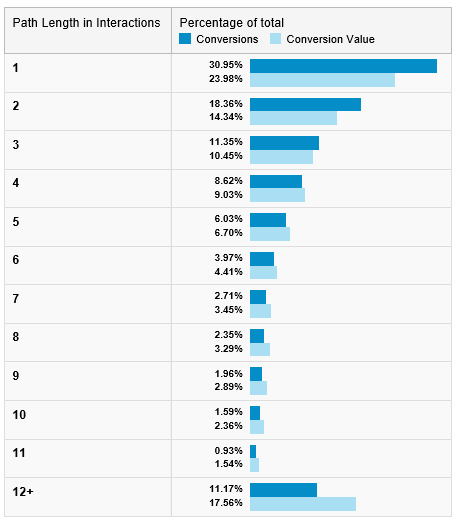
Fig. 1 – Number of sites visited before placing the order (source: enaA.com)
It is also interesting to see how much time passes from the moment someone visits an online store to them choosing an item and then completing the purchase by placing the item into the cart. A total of 43.06% of customers take the plunge on the same day, while 37.17% of customers make the final click after anywhere from 12 to 30 days. It seems that in this case too, the comparison of the share of purchases by value is inverted. The value of speedy purchases represents 36.2% of the total value of purchases, while the value of purchases made after 12 to 30 days accounts for 44.11% of the total value. It is safe to say that prior to purchasing a high-end product, we not only look at more websites but also allow ourselves more time to check out the offers at other online as well as brick and mortar stores. It is also true that it takes customers more than four days to place orders for above-average purchases (€160 at enaA.com).

Fig. 2 – Time between the first visit and placing the product into the shopping cart (source: enaA.com)
But prudency does not end here. After placing the item in the cart, 72.07% of customers make the purchase immediately or on the very same day. However, it should not be ignored that 7.42% of customers make the actual purchase after 28 day or more. This, of course, includes our record-breaker of 16 months.

Fig. 3 – Days between placing the product into the cart and placing the order (source: enaA.com)
If your goal is to sell items faster or, better yet, to sell them in general, I suggest providing the customer with a detailed product description. The description should include everything a customer might be interested in. This will reduce their need to seek out further information on the product elsewhere. By doing so, they will be less likely to purchase the product that you are offering somewhere else. There’s nothing easier than offering a customer who has almost made up their mind to make the purchase at your online store a discount in the form of a personal conversation.
Whatever you do though, never treat online customers hastily.
First steps in VR-commerce
Excellent experience with Trillenium at Asos in London. VR is next big step in the way we will use our computers, smartphones. Glad to be at least small part of it.





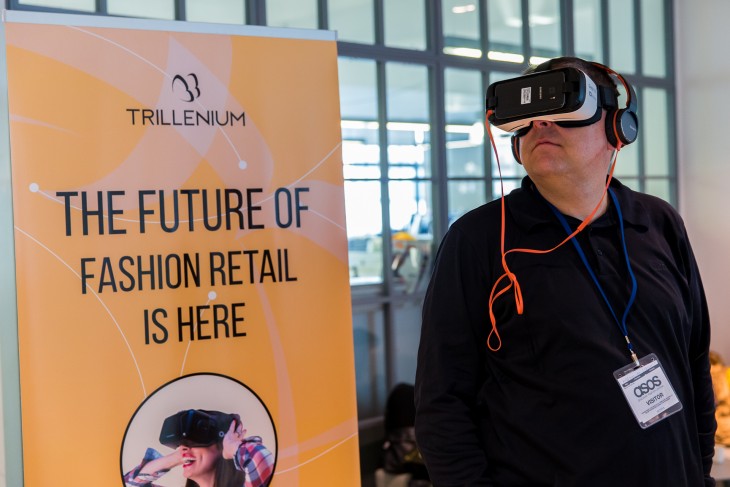
How to Successfully Sell Online after Google changed
If your sales figures mainly depend on Google, Facebook, and various advertising networks, you’ve hit a dead end. Even if an average 2% of clicks end up converted to sales (not a bad result), taking into account an average price of $ 0.15 per click (also not a bad price), the cost of advertising with Google amounts to $ 7.5 per purchase. If this was the price to pay just once for a regular customer, guaranteed to buy more, you’d still be able to stay in the black. However, you will have to pay $ 7,5 for each purchase coming from Google forever. Customers are creatures of habit. The next time the majority of customers will again start their sales journey on Google. If your ad is not there this time round.
After Google changed the positions of ads and is now more advertising panel than search engine. On mobile phones whole first screen is reserved for ads. On PC’s and laptops users now see four ads first and only two to three search engine results.
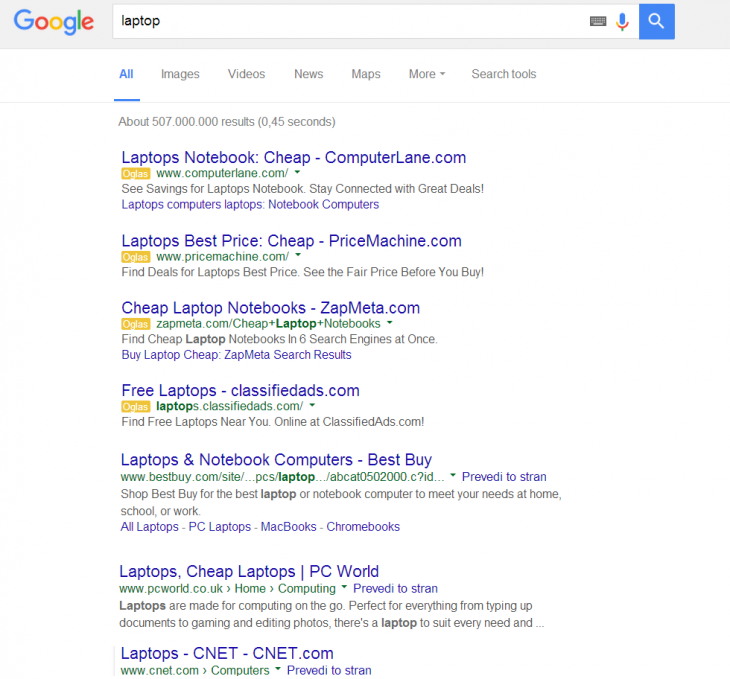
Ok. Thank’s Google. It is even more clear now how to actually successfully sell online. Just take next three steps forwards as soon as possible:
1. Calculate the actual success rate of your existing Google advertising campaigns, as well as other services where you might be paying for clicks or impressions (price comparison sites, for example are even less effective than Google), making sure the sales you generate with their help let benefits go to your pockets and not theirs. Think about whether it’s worth it in the long run!
2. Ensure your offer has the best possible content. This is a mantra repeated time and time again by all SEOs and inbound marketing experts. However, never put too much stock into how many times your keyword is written in the meta tag. What you need is a truly excellent description of your offer. It needs to be a real pleasure to read, telling buyers everything there is to know about your offer and convincing them to make a purchase. You should additionally ensure a short summary which is visible when a link to your page is published on Google, Facebook, etc. And that’s it. Believe me, if you don’t know the best description for your offer, no inbound or SEO expert can help you.
3. Instead of paying for clicks and impressions, start by only paying an adequate share of the realized sales to those who help you generate a larger number of purchases. Use performance marketing! You can find on affiliatewindow.com all top brands are using it.
Alternatively, you can post your offer in the largest online stores on the Internet:
a. Amazon.com
b. Alibaba.com
c. Ebay.com
d. enaA.com
Billions for future fashion brands
Who will be the largest and most influential player in the fashion industry? If you immediately thought of Chanel, Armani, Prada, Dior, Burberry or other high-end brands, or retailers such as H&M or Zara, then it is clear that you are out of the online fashion loop.
Downtrend case
You should find similar story in all countries in which companies pay too little attention to online. The fact is that the internet is an ever-shifting market and trends are bound to turn around eventually; in fact, in the past weeks my discussion partners from the Slovenian fashion industry tried to convince me that lately customers are increasingly seeking out brick and mortar stores. They supported this claim with the fact that the online store Stilago recently shut down after five years of operations, and that from 10 July Fashion Days will also terminate its presence in Slovenia due to some undisclosed business changes. Being the indefatigable online sales promoter that I am, I am concerned by such a turn of events, because this will lead to a temporary standstill of the fashion offering on Slovenian internet sites.
The big players apparently don’t get it. Sportina Bled, which in 2009 generated sales of 77 million euro and once spearheaded the clothing retail industry in the country, generated sales of only 40 million euro in 2014. Instead, the top position went to Magistrat International (Galerija Emporium owner) which has seen a gradual decline of sales from 2011, too. (the 2014 figures have not yet been published). However, since the people of Slovenia still wear clothes while going about their daily business, it is clear that a shopping shift must have taken place: they now shop at online retailers from abroad. I do not think it is good idea to sit around, waiting for the tide to turn and for the customers to return to conventional stores.
Global growth
There are three notable European companies competing on the global fashion market: First there is the Germany-based Rocket Internet Group, the second is the British Asos and the third the Italy-based Yoox which has just recently acquired the fourth competitor Net-A-Porter. It looks like in 2016 they will be joined by Style.com, which is currently a website featuring fashion photography and fashion articles, and owned by the Conde Nast company which publishes the famous Vogue – not exactly a fashion rookie, right?
These online retailers reported that their sales figures have skyrocketed and apparently none of them have problems coming up with the capital necessary for the fast growth which is required to win this race.
On its website, Rocket Internet boldly declares that it sets out to become the largest global online platform outside the USA and China. The proof that this statement is more than just wishful thinking is their spin-off company Zalando – the largest fashion item retailer in Europe. In 2014 Zalando recorded a jump from 1.7 billion euro to 2.2 billion euro, for the first time wrapping up the business year with a healthy profit of 47 million euro. The company began its sales operations in 2008 in Germany, and currently runs subsidiaries in 13 European countries, its total worth valued at 7.7 billion euro. Rocket Internet is the lead shareholder in the Global Fashion Group which recently announced that it secured 150 million euro in new funding to purchase the Brazilian online retailers Kanui and Tricae.
Yoox too is aware that there is a market to be conquered beyond Europe. After acquiring Net-a-Porter, the company expects large growth in China which is said to become one of their top ten markets already this year. In 2014, 24 million visitors per month generated sales in the amount of 1.3 billion euro. Combining fashion and technology, the retail giant is valued at 1.8 billion euro which is not much considering that Yoox and Net-a-Porter were among the first online fashion stores around.
But I guess there is more to it than just business results. In 2014, Asos generated a little less than 1 billion euro in sales, driving its value to around 7 billion at the beginning of this year. Later it dropped to 3 billion and currently stands at 4 billion euro. Last year the growing strength of the British pound made Asos less competitive on the Russian and Australian market. This led to a drop in sales and lower prices in turn affected the sales performance. Even though online retailer Asos boasts of cultivating shoppers with high customer loyalty, the company quickly realized that the modern shopper is not prepared to choose loyalty over price.
Making room for new players
There is a large gap in online fashion which should be filled by start-up companies from all regions.
Styliff, a young company (for the time being still mostly Slovenian owned), designed an app for trying on garments found online before committing to a real purchase. More specifically: you can dress one of the photos that you previously saved on your smartphone in the desired garment. Naturally, you can share your experience with your friends, ask for their opinion and commit to a purchase only when you are absolutely sure that this is the outfit for you. But watch out – according to the first results shoppers buy and spend more when using this app! This new way of shopping for clothes therefore appeals to online retailers and has made the Styliff team feel more than welcome in retailers’ offices. Their brand offer now includes clothes by MaxMara, Diesel, Boss, Ralph Lauren, Moschino, DKNY, Alexander Wang and others. They are among the most successful and most observed companies in ABC Accelerator Smart Cities program with estimated value 3 to 4 million euros.
Another innovative way of shopping was showcased by Trillenium . A combination of virtual reality, computer games, mobile technology and 3D technology resulted in a virtual store where you don’t browse but instead walk around the online store, choosing items that catch your fancy. Immediately recognising the company’s potential, Asos pledged funds and commissioned the first virtual stores. This is a big step forward for the e-tailer without a single brick and mortar store. And perhaps this concept will be their competitive edge. Enough for Trillenium estimated value 3 million euros.
Now, who are you going to wear tomorrow?
What matters most in selling online?
At Amazon.com you can buy just about anything. Still, it is public secret t that 80% of their sales are generated from products that are sold exclusively at Amazon. Never mind the fact that the company is the leading online retailer boasting the largest customer base, a quick website featuring detailed descriptions and contents, an excellent user interface and so on. Just look at the prices of any of the technical products and you will get the picture. It’s the price. The main obstacle is the high price.
Being the only provider of a certain item and offering your products only at a website such as Amazon.com, you can achieve great sales results. Having come to the same conclusion, many Americans and other vendors rely on just one website such as Alibaba.com, eBay.com or Amazon.com or, alternatively, just a handful of online stores to sell their products.
Do you want to know why this is a good thing?
Manufacturers who dominate classic sales channels have an interest that their products take up as much of the sales’ area in as many stores as possible. Some opt for a smaller number of intermediaries who meet certain criteria to assist them in this process, but regardless whether they decide to set up an intensive or selective sales’ path, they are always on the lookout for more intermediaries. In certain fields exclusivity is rare. Buyers are looking for providers offering the best deals, but retailers can maintain different prices on account of their personal approach and special bonuses without being in direct competition with each other, even though they are only a block or two apart.
The internet on the other hand is a very different animal. The internet is about transparency; it is also about a unique mix of indirect and direct sales. It’s a whole new model. The manufacturer or provider can offer their product or service directly to the shopper, albeit indirectly via an online service such as Amazon.com or enaA.com, but this does not diminish the fact that this is a direct selling technique. More often than not, products are delivered from the manufacturer’s warehouse. That makes sense – it’s practical, quick and cheap. The warranty and after-sales customer support have to be provided by the manufacturer and its servicing network. Ultimately, the product price is also determined by the manufacturer itself. In short, the online retailer is an intermediary, whose role is much smaller than in classic sales, giving the impression that the shopper and the manufacturer communicate without any intermediary at all.
Why I advise against copying classic sales’ paths and applying them online?
Manufacturers who go down this path and offer their products in countless online stores are faced with the issue of price management. Online stores are not several miles apart, but only a few clicks. Shoppers can thus easily find stores that offer the same product for a lower price. And distance doesn’t matter; the store can even be abroad.
Now let us take a look how this works in practice. The Samsung UN32EH4003 television set is listed at Amazon.com without a price. Instead, it says “To see our price, add this item to your cart.” The shopper can only see the price after adding the product to the cart where it says that their price is lower than Samsung’s recommended retail price, so Samsung does not want it to be public.
If you think that the two retail giants Amazon and Samsung have adopted a successful sales model and that this approach is a good idea, I suggest googling “UN32EH4003”. You will get hits for this TV at samsung.com, amazon.com, digitaltrends.com, walmart.com, bestbuy.com, cnet.com, ebay.com, electronicexpress.com and conns.com. Each site displays a different price. Samsung doesn’t control anything; it just limits sales via online retailers who are big enough to be controlled.
Which one of these platforms will end up selling the TV? The one with the fastest and more flexible service, and with the lowest price point. This is why you will not find this TV among the bestsellers at Amazon.com.
Similarly, Google doesn’t favour the offerings of the same product at various websites with an identical photo and descriptions. For the browser, this is just a copy of one and the same site, and is therefore punished by a lower rating. If someone looks up LCD TVs, those pages will not be among the top hits, I am sure of it. Now you have another reason why it is better to be the direct retailer online.
However, even though Samsung and other similar retailers did not adapt to the new situation, smaller American business saw their chance in selling their products and services exclusively via Amazon – with great results.
Example from Slovenia, Europe: enaA.com offers you the Samsung 32H4000 with the lowest price guarantee.
The Myth of the Borderless European Digital Market
So I buy a subscription to my favourite TV channel, drive to the seaside… and realise my subscription doesn’t work there. The seaside is in another EU country, my computer connects to a different Internet service provider there and the copyrights I have bought are only valid in Slovenia.
If I go for a vacation to Croatia (which, by the way, has the nicest seaside in the EU http://croatia.hr/en-GB/Homepage), this does not mean that I am interested in their local commercials for cars and offers for smart phones with subscriptions. If I was interested in any commercials on my vacation, it would be commercials from the country where I spend most of my time and spend most of my money. I am certain that advertising agencies understand this. Unfortunately, it seems that those who write regulations and draw up copyright contracts do not. From the user’s point of view, the whole thing is rather stupid, but in reality, there is much more to it. What it means is a breach of my basic right to use what I have bought anywhere and anytime I want.
Europe (whatever this means these days) promises the following on this page http://europa.eu/pol/singl/index_sl.htm (and not only on this page), and I quote: “In the EU’s single market (sometimes also called the ‘internal market’) people, goods, services, and money can move around the EU as freely as they do within a single country – instead of being obstructed by national borders and barriers as they were in the past. EU citizens can now study, live, shop, work and retire in any EU country. Or we can stay at home and enjoy a vast array of products from all over Europe.”
Sending Goods to Africa Is Cheaper than Sending Goods to Slovenia
Well, of course. You can sit down at a computer anywhere in the EU, browse online shops and buy a thing or two. Oh, but wait, here comes the catch: you soon realise that if you buy a book from Amazon.com, the cost of delivering the same book to the Italian side of the town, called Gorizia, is at least 20 percent lower than delivering the book to the Slovenian side of the same town, called Nova Gorica. If you look at http://www.amazon.co.uk/gp/help/customer/display.html?nodeId=11072981, you will also see that Amazon UK charges lower delivery costs for delivering the same book to South Africa than to Slovenia.
Even worse is the feeling when a Finnish server rejects you and states: “No, we do not sell to your country, this product is available only for us, the Germans, the Italians, the French and the English.” Even the largest and most modern online store of all, amazon.com, refuses to sell a number of things to Slovenia. But they only tell you this at the very end of the purchasing process:
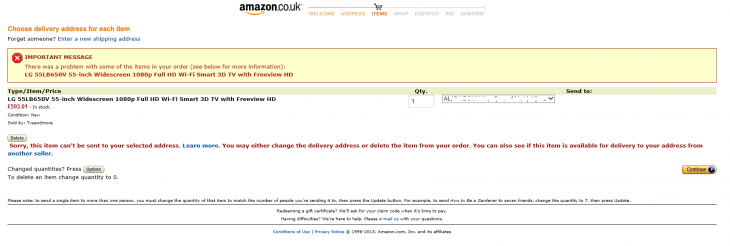
You are, of course, welcome to order the product as poste restante to the neighbouring Italy or Austria. The reason for all of this is, for the most part, not knowing consumer rights in individual countries and the connected risks.
When, finally, you realise that the delivery cost from an online store in Klagenfurt (Austria) to Ljubljana (Slovenia) is several times higher than the delivery cost from Lendava (Slovenia), which is quite a few more kilometres further to the east, you really have to ask yourself where is this mythological single internal market whose benefits I am supposed to fully enjoy as a citizen of an EU country. How come that not all consumers from EU countries enjoy the same consumer rights? The borders have been down for a number of years. Why am I being discriminated as a consumer from Slovenia?
The European politicians claim that the development of a single digital market is one of the most important generators of European economic growth. Within this framework, in 2013 they implemented the regulation on website cookies which has not increased the volume of European online sales, nor has it improved consumer experience. Cross-border online sales account for only 14 percent of online sales, while the European consumers happily shop in non-European online shops.
The New “Cookies”
In Brussels, they have been setting up an extensive legislative reform which is supposed to make the matters even more complicated in the next two years, defining (among other things) what is and what is not allowed in terms of e-marketing. By doing so, the EU aims to place an additional burden on the EU retailers, whilst enabling unfair competition of virtually all global providers on the EU market.
Just like in the case of cookies, one cannot get rid of the feeling that they do not have a clue about what they are doing. For example, Microsoft has revealed that every minute they block more than 10 million spam messages aimed at the e-mail addresses of their company. You cannot solve this with legislation.
A Single Digital Market
As of yet, when it comes to online and mobile sales and marketing, we can only follow the technological solutions of American companies. Making just a few clicks reveals that the story about the borderless single European (digital) market is a myth. The Americans have a single market with 300 million users, whilst in the EU we have 28 markets with around 500 million users.
To ensure a single European digital market, Jean-Claude Juncker and his team ought to ensure a single postal system, a single copyright system, equal rights as regards product warranties, consumer protection and other consumer rights, so that all consumers within the EU could really, finally, sell and buy under the same conditions. A market of 500 million people is the basis for starting to develop our own solutions and our own user experience, which should be supported with appropriate legislation. As things are at the moment, Europeans seem to be their own worst enemy.
Slovenska verzija http://aljosadomijan.com/bajka-o-velikem-digitalnem-evropskem-trgu/
Splet kot prodajna pot – česa ne smete spregledati
Na Amazon.com lahko v ponudbi najdete skoraj vse. A tudi sami ne skrivajo, da 80% njihove prodaje predstavljajo izdelki, ki jih prodajajo le oni. Nič ne pomaga, da so prvi spletni trgovci, da imajo največjo bazo kupcev, izredno hitro spletno stran, neverjetno obsežne opise in vsebine, odličen uporabniški vmesnik in še kaj. Ko pogledaš cene marsikaterega tehničnega izdelka, ti je vse jasno. Cene. Visoke cene so ovira.
Če si edini ponudnik in je Amazon.com edina spletna stran na kateri prodajaš svoje izdelke, lahko prodaš precej več. To je jasno velikemu številu Američanov in tudi drugih podjetnikov, ki za prodajo uporabljajo le eno spletno stran kot je na primer Alibaba.com, eBay.com ali Amazon.com ali zelo omejeno število spletnih trgovin.
Zakaj je to dobro?
Proizvajalci, ki obvladujejo klasične prodajne kanale, so pogosto zainteresirani, da s svojimi izdelki zasedejo čim večjo površino prodajnih polic v čimvečjem številu trgovin. Nekateri se sicer odločijo za manjše število posrednikov, ki izpolnjujejo določene kriterije, a ne glede na to, ali se odločijo za vzpostavitev intenzivne ali selektivne prodajne poti, vedno iščejo možnosti, kako jih vključiti še več. Ekskluzive za določeno območje so redke. Kupci sicer iščejo ugodnejše ponudnike, a trgovci, četudi jim mogoče loči le ulica ali dve, lahko z osebnim pristopom in različnimi ugodnostmi ohranjajo različno visoke cene, ne da bi si pri tem neposredno konkurirali.
Na spletu je drugače. Na spletu je vse transparentno. Poleg tega je splet svojevrstna kombinacija neposredne in posredne prodaje. Gre za nov model. Proizvajalec ali ponudnik svoj izdelek ali storitev ponuja neposredno porabniku, res da posredno preko spletnega servisa tipa Amazon.com, enaA.com ali podobnega, a vendar o neposrednosti ni mogoče dvomiti. Najpogosteje bodo izdelki dostavljeni iz skladišča proizvajalca. To je tudi logično, saj je tako najbolj praktično, najhitreje in najceneje. Za garancijo in dodatno podporo kupcu bo moral poskrbeti proizvajalec sam s svojo servisno mrežo. In konec koncev tudi ceno izdelka določa sam. Skratka, spletni trgovec je sicer posrednik, a njegova vloga je precej manjša kot pri klasični prodaji, tako da se vse dogaja skoraj tako, kot da med kupcem in proizvajalcem ne bi bilo nobenega posrednika.
Zakaj ne priporočam kopiranja klasičnih prodajnih poti na splet?
Proizvajalci, ki to poskušajo in svoje izdelke ponujajo preko neštetega števila spletnih trgovin, se soočajo z nepremostljivo težavo upravljanja s cenami. Trgovine na spletu med seboj niso oddaljene kilometre temveč le nekaj klikov. Kupci tako zlahka najdejo tiste spletne trgovine, ki isti izdelke ponujajo ceneje. Mogoče celo v sosednji državi.
Poglejmo, kako to izgleda v praksi. Televizor Samsung UN32EH4003 imajo na Amazon.com objavljen kar brez cene. Namesto tega so napisali »To see our price, add this item to your cart«. Ceno lahko torej kupec vidi šele, ko da izdelek v košarico, ker je, kot pišejo, njihova cena nižja od Samsungove priporočene maloprodajne cene, Samsung pa ne dovoli, da jo javno objavijo.
Če se komu zdi, da je to dobra domislica in uspešen prodajni model dveh velikanov kot sta Amazon in Samsung. naj na Google.com vpiše izraz UN32EH4003 in dobil bo zadetke za ta televizor po vrsti na samsung.com, amazon.com, digitaltrends.com, walmart.com, bestbuy.com, cnet.com, ebay.com, electronicexpress.com in conns.com. Na vsaki strani drugačna cena. Samsung ne kontrolira ničesar, temveč le omejuje prodajo preko spletnih trgovcev, ki so dovolj veliki, da jih lahko nadzoruje.
Kdo bo torej prodal televizor? Tisti, ki je hitrejši, prožnejši in cenejši. Zato boste ta televizor zaman iskali med najbolje prodajanimi izdelki na Amazon.com.
Tudi Google-u ponujanje istega izdelka na številnih spletnih straneh z enakimi slikami in enakimi opisi ni všeč. Za Google so to le kopije ene in iste strani in jih vse kaznuje z nižjim ratingom. Če nekdo išče na primer LCD televizor, teh strani zagotovo ne bo med zadetki na vrhu. Še en razlog več, zakaj se je na spletu bolje obnašati kot neposredni prodajalec.
A če se ne znajo prilagoditi Samsung in drugi podobni proizvajalci, se znajo manjši ameriški podjetniki, ki svoje izdelke in storitve ponujajo le preko Amazona. In jim gre dobro.
Slovenci smo majhni, a seveda nismo Američani. V vsakdanji praksi opažam, da zaenkrat raje na splet selimo stare koncepte prodaje. Vrsto tehničnih izdelkov slovenski distributerji preko posredovanja podatkov v XML formatu ponujajo na več kot sto slovenskih spletnih trgovinah.
Če ste si ob branju tega prispevka zaželeli televizor. Samsung 32H4000 z garancijo za najnižjo ceno dobite na enaA.com.

